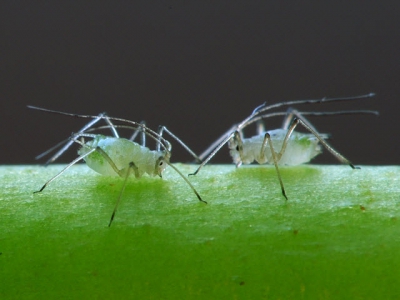Grow Your Own Potatoes – Potato Pests and Diseases

Grow Your Own Potatoes
When you are just starting to grow your own potatoes, there many potato pests and diseases which are potential enemies of the potato which you should know about.
They can potentially harm your crop and should be looked out for and dealt with accordingly, however by buying certified virus-free seeds from your local garden centre, you should be able to avoid some of the more menacing problems and viruses.
Potato Pests and Diseases
POTATO PESTS:
Slugs
The main physical damage caused to potatoes under ground is by slugs, particularly the black keel slug. I find the best way to tackle this is to anticipate their attack. One way is to scatter a few slug pellets along the trench as the tubers are being planted or in the hole if a dibber is used. By the way, if a dibber is used then it should be blunt ended and not pointed. Dibber planting is only feasible on light soils – as the dibber compresses the base of the hole.
There are various commercial preparations including carbaryl which can be used in the soil but probably the most effective is to mix one pound of powdered copper sulphate with 7 lbs of hydrated lime and work this thoroughly into the soil at least three weeks before planting. Copper by itself is a plant poison but is neutralised by the action of the lime; even so, it should not be used on soil where crops are growing.
One of the most effective methods of escaping damage in slug-infested soil, is to dig up all varieties of potato, whether early, mid-season or late, before the end of September. The reason being that if left, young slugs can gorge themselves on these before descending to lower depths to escape the rigours of winter.
Millipedes
Millipedes can be a pest on some soils. Where these have been turned up while digging treat the ground with a proprietary soil insecticidal powder. This also applies to wireworms which are more prevalent where pasture has been dug up to make a garden.
Aphids or Greenflies
Above ground, aphids or greenflies may be troublesome and at first sight they should be treated by spraying the foliage with a systemic insecticide as greenfly are vectors of disease.
Cutworm
Nearer the soil cutworms, the larvae of a moth, may tunnel into the hollow stems of the plant both upwards and downwards causing the stems to collapse and wither. As they are hidden and protected inside the answer is to cut off carefully the haulms and burn or bury them deeply.
POTATO DISEASES
On the whole, diseases of potatoes are much more serious than pests. The first line of defence is never to plant a discoloured tuber which shows evidence of storage rot or one with depressed areas indicating some other disease. It is always better to be safe than sorry and to give the crop a precautionary spray. July is the month for fungal diseases due to its high humidity, so spray with a liquid copper fungicide or dust with Bordeaux powder.
Scab Infections
There are two scab infections which attack potato tubers, common or brown scab and corky or powdery scab. There is little one can do about corky scab but the common scab merely disfigures tubers rendering them unfit for exhibition. They have to be peeled a bit more deeply before cooking and usually do not keep as well. The cause is a micro-organism called actinomyces. Heavy liming, naturally alkaline soil, dry conditions and lack of organic matter in the soil favour development of this disfiguring infection.
In practice, the burying of green stuff at planting time (such as old sprout leaves which are usually ready for clearing at this time), the addition of some peat, and dusting the trench with flowers of sulphur at the rate of 1/2 oz to the metre of row, can help.
Planting time also coincides with cutting grass so lawn mowings should be used liberally but not if the lawn has been treated with a hormone weedkiller.
Eelworm or Leaf Curl
For the rest of the problems such as eelworm or leaf curl which show their signs and symptoms after the crop has started growing, it is too late to do anything about them and the best advice is to clear the crop as early as possible. The young tubers, if large enough, are edible but should never be saved for seed.
If you are going to grow your own potatoes, remember that potatoes should not be grown in the infected area for as long as is practicable, and use this list of potato pests and diseases to help with successful and plentiful potato growing.
Related news
 Preparing and planting capsicums
Preparing and planting capsicums Basic fertilisation for capsicums should be adjusted according to a good soil analysis. If you don’t do this, you’ll waste fertiliser and perhaps exacerbate
 Growing Strawberry Plant – How to Grow Strawberry Plants
Growing Strawberry Plant – How to Grow Strawberry Plants Where strawberries are grown for exhibition, or to produce extra fine berries for the table, there is nothing to beat the mound or ridged system
 Managing peppers through to maturity
Managing peppers through to maturity As noted last week, the balance between fruit set and leaf volume can have a major effect on the yield and bearing pattern of a pepper plant